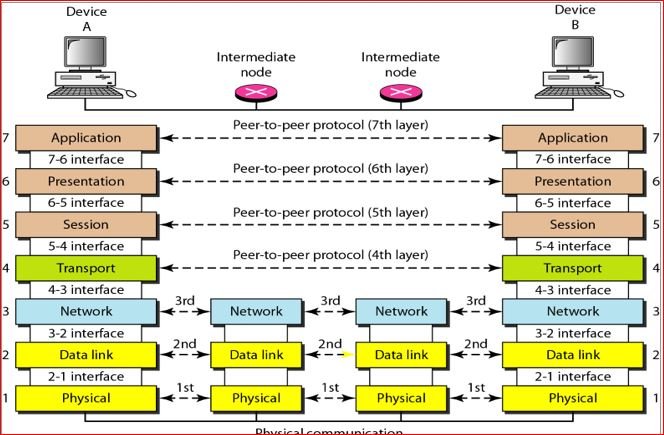Basics of Networking – OSI Layer
OSI Layers
The Open System Interconnect (OSI) is a model developed in early 1980. This model divides the computer communication process in to seven vertical layers. The OSI model just provides a generalized description internetworking tools. As this model worked more as a reference point for the network specialist and developers , it is also know as OSI Reference Model. OSI models helps in defining the role of a product in a network & its specifications. The OSI model defines the intercommunication layers of the systems in a packet switched networks.
Seven Layer OSI Model
Physical Layer – This layer deals With the Physical Connection Between the computers. Provides specifications for building a physical infrastructure of a network called TOPOLOGY – Bus, Mesh, Star, Ring, Hybrid, Extended star etc.
Data Link Layer – The Data link layer ensures the data delivery between the two nodes. In LAN these are two endpoints of a communication process. In WAN these are two neighbor devices which are part of a communication process. The format of the data at this layer is known as frames. The Data Link Layer also handles the data transmission on network media. The sub layer of data link called Media Access Control (MAC) uses a method to achieve this task. This method is known as Carrier Sense Multiple Access (CSMA). The Data Link layer also performs error detection and correction methods.
Network Layer – The Network Layer introduces a Logical Address scheme. This Address scheme allows you to divide your single large physical segment into smaller logical groups called networks. This helps improve the performance of the network. As these networks can not directly communicate with each other, this layer also provides mechanism to achieve this. A device called router is used for the inter network communication.
Transport Layer – As the packets may get lost during their travel from source device to destination device, something has to take care of this to make the data transfer reliable. The transport layer provides this service to all the upper layer protocols of the OSI model.
Session Layer – The session layer controls the communication between the two devices. It provides tools and mechanisms by which the two communicating devices can synchronize the session.
Presentation Layer – The presentation layer deals with the form in which information transmitted through the network is represented, without changing its contents. Because of this layer, information transmitted by the application layer of one system is always understandable to the application layer of another system. This layer also introduces data security mechanisms like encryption to make sure data transmissions on any type of network are secure.
Application Layer – The application layer is really a set of several protocols that network users can use to access shared network resources, such as files, emails and Web pages.


